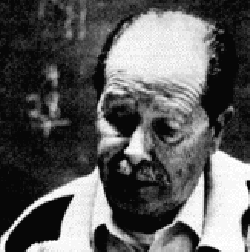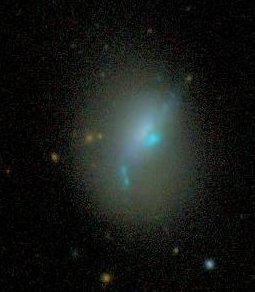Haro, Guillermo (1913–1988)

Guillermo Haro was a Mexican astronomer best known as the co-discoverer of Herbig-Haro objects and for important work on flare stars, blue galaxies with line emission, known as Haro galaxyies, and stellar evolution and formation, and, most importantly, for putting Mexico on the astronomical map.
Haro grew up amid the turbulence of the Mexican Revolution and began his early studies in law. After discovering astronomy through the motivation of L. E. Erro, Haro left law and became his assistant. From 1943 and 1947 he carried out research in the United States at Harvard College Observatory, Case Observatory of the University of Chicago, and McDonald Observatory. Subsequently he served as director of the Observatory Astronómico de Tacubaya, the Instituto de Astoronomia, and the Observatory Astronómico Nacional. He also started the project to establish the Observatory of San Pedro Mártir, Baja California, in 1968, which now bears his name.
Haro galaxy
 |
| Haro 3 (NGC 3353).
Image: Sloan Digital Sky Survey.
|
A Haro galaxy is a blue galaxy similar to a Markarian galaxy, often elliptical or lenticular in form, whose spectrum shows bright, sharp emission lines. The emission may be from an active galactic nucleus or from a recent burst of star formation. These galaxies are named after Guillermo Haro, who discovered them in 1956.


